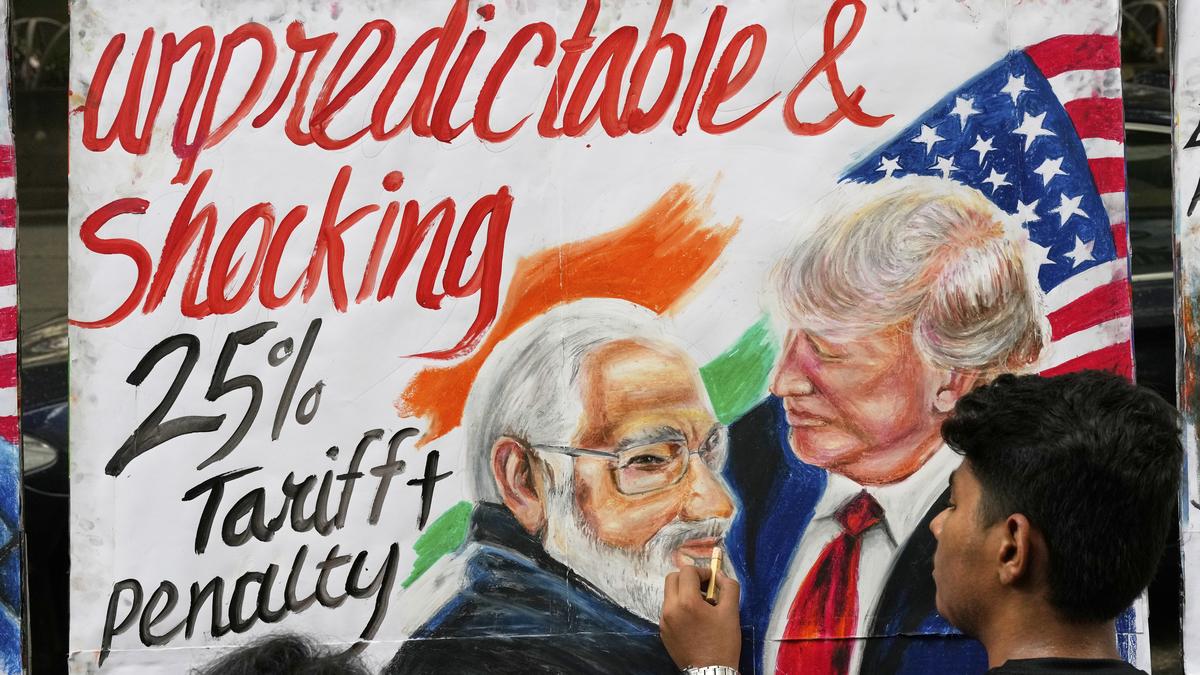Now Reading: Trump’s Tariffs: What They Mean for India
-
01
Trump’s Tariffs: What They Mean for India
Trump’s Tariffs: What They Mean for India

Swift Summary
- Tariff Proclamation: U.S. President Donald Trump imposed 25% tariffs on imports from India, citing trade measures and India’s dealings with Russia. A potential penalty is also mentioned but remains unspecified.
- Trade Deal Uncertainty: This move raises doubts over a bilateral trade agreement between India and the U.S., though talks have been ongoing as early 2025.
- Economic Impact on India: The Bank of Baroda estimates only a 0.2% dip in India’s GDP growth due to these tariffs but highlights risks for sectors such as garments, precious stones, auto parts, leather products, and potentially electronics.
- India-Russia Relations at Issue: Trump’s concerns extend to India’s notable oil imports from Russia (35-40%) and its military engagements.
- Agriculture & Dairy Red Lines: India refuses to open these sectors to global competition in trade deals due to potential harm to farmers’ livelihoods.
- Retaliatory Measures Considered: India informed the WTO of its right to retaliate against higher tariffs imposed by the U.S.
Indian Opinion Analysis
This tariff imposition could signify shifting dynamics in the strategic partnership between India and the U.S. While the immediate economic impact appears modest (a 0.2% reduction in GDP), specific industries reliant on exports could feel significant strain due to increased costs for American importers. Additionally, competing nations with lower tariffs may gain an edge over Indian exporters.
The intersection of trade policy with geopolitical issues like India’s engagement with Russia further complicates negotiations for a potential deal by fall 2025-the declared deadline for finalizing bilateral agreements. Mr. Trump’s approach ties national security considerations directly into economic policies-a stance that challenges traditional norms of separating trade concerns from foreign relations.
On India’s part, protecting critical domestic sectors like agriculture demonstrates pragmatism rooted in socio-economic priorities; though, this stance limits versatility during negotiations with developed economies seeking extensive access.
Ultimately, this development stresses the importance of recalibrating strategies-not just within strained industries-but towards diversifying partnerships globally while maintaining diplomatic equilibrium with major economies like the U.S.read more here: Source Link

























